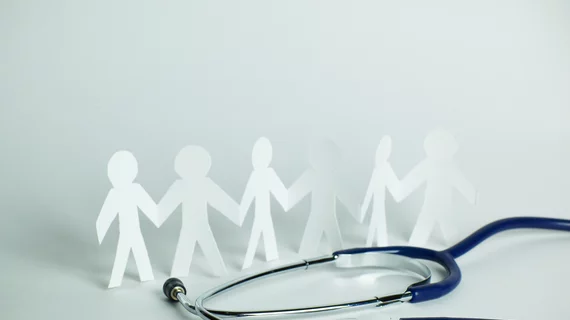The medical community continues to warn that a patient’s ZIP code is just as important, or more so, as their genetics in predicting health outcomes. And experts recently detailed how the medical imaging community can take a larger role in such population health-based care.
Among nearly 60 medical specialties, radiology serves the most unique number of Medicare beneficiaries and more individual fee-for-service visits than any others, Jim Rawson, MD, of Beth Israel Deaconess Medical Center, explained on Monday during RSNA’s annual meeting.
“That means if you wanted to impact the health of the population; if you wanted to have the broadest reach, you’d want to be working with the specialty that has the most contact with patients … and that’s radiology,” Rawson, vice chair of operations at the Boston institution’s radiology department, added. He noted that social determinants are responsible for 60% of avoidable deaths in the U.S.
Chest CT as a public health tool
At Michigan Medicine, radiologists are turning incidental findings discovered on chest CT exams into a valuable population health resource.
“I see chest CT as a public health tool, as a window into early detection and risk,” Ella A. Kazerooni, MD, MS, with the Ann Arbor medical school’s department of radiology, remarked during the session.
Patients who undergo a scan for reasons other than cancer screening have their exams analyzed by software that identifies potential lung nodule growth and emphysema risk.
Similarly, Kazerooni noted, providers can use the information within any CT scan to determine osteoporosis risk and the presence of coronary arterial calcification.
This information can also be plugged into patient-centered radiology reports, she added. With the help of a Small Business Innovation Research grant, her team is testing whether such CT insights can be incorporated alongside infographics to encourage patients to quit smoking.
Pairing the up to 100 million CT scans performed in the U.S. each year with the fact that the top three leading causes of mortality begin in the thorax—cardiovascular disease, lung cancer, and respiratory disease—Kazerooni sees CT exams as a big public health opportunity.
The future of population health AI
While most artificial intelligence is focused on the images themselves—such as enhancement, diagnoses, and segmentation—there remains untapped potential in population-based applications. That includes treatment selection, response assessment, and clinical prediction.
Daniel Rubin, MD, MS, a professor of both biomedical data science and radiology at Stanford University, said most uses for the latter are still in the research stage. There are, however, promising examples.
One such prediction model combines retinal image data with clinical information to accurately predict—during each patient visit—if an individual should expect their macular degeneration disease to progress.
The challenge is acquiring enough data to make population-wide predictions, he noted. Federated learning takes much of the privacy and data challenges out of the equation and is pushing the radiology AI world toward a more population-focused future.

